Choosing a Glass Shower Door
The essential guide to selecting, installing, and maintaining a glass door for your shower or tub.
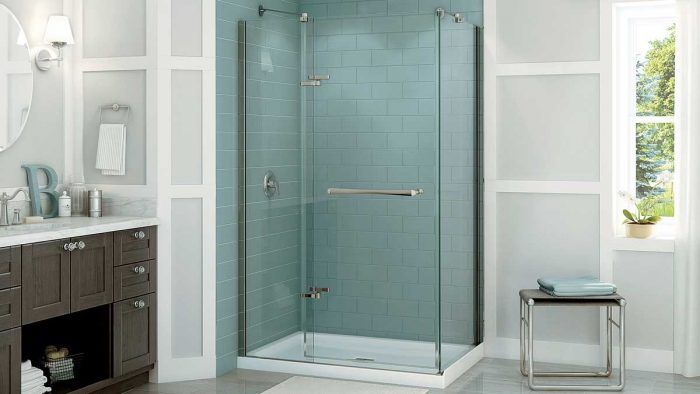
Synopsis: Contributing editor Sean Groom surveys the world of glass shower doors, which fall into three categories: framed, semiframeless, and frameless. Taking each style in turn, he discusses installation, hardware, cost, and aesthetics. He also looks at the glass itself, which is usually clear but is available also in a host of obscure varieties that provide greater privacy.
The rise of two bathroom-remodeling trends—larger showers and frameless doors (and enclosures)—is not a coincidence. A larger shower takes up more space, and that can make the area outside the shower feel small and confined. The right glass and hardware can relieve the sense of claustrophobia, though, because they can make the shower virtually invisible.
Shower doors break down into three styles: framed, semiframeless, and frameless, with corresponding increases in cost and complexity. Here’s what you need to know to buy the right product for your bathroom.
Frameless Doors
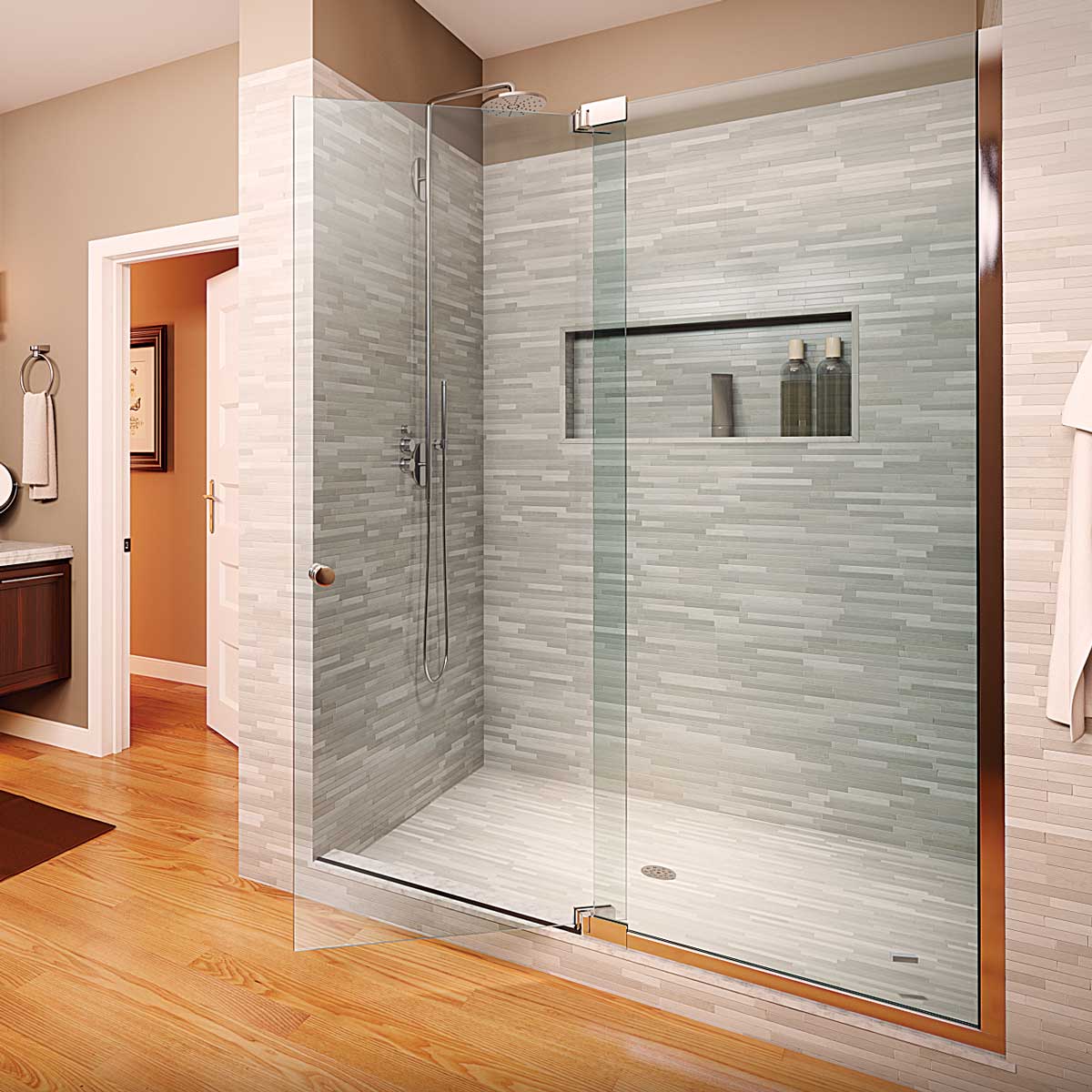
The most open, invisible shower doors rely on shallow channels and/or clips along walls and at the bottom of panels. Clips connect the panels to one another. To add rigidity, these doors and panels are either 3⁄8-in. or 1⁄2-in. thick. If you’re thinking about installing doors yourself, keep in mind that a single swinging glass door can weigh 130 lb. Depending on the configuration of the shower, a header (thin compared to those on a semiframeless door) or diagonal corner braces may be needed for reinforcement.
Frameless doors come in two categories: semicustom and custom. Semicustom types offer door or door-and-panel combinations to fit a wide range of standard shower configurations, including bench cutouts and kneewalls. With a custom shower, doors and enclosures are templated to the space and can be cut to any size and shape. Custom options make it possible to fit a shower under an eave by scribing a glass door against both a kneewall and a sloped ceiling, or to create a steam-shower enclosure under a ceiling of a nonstandard height.
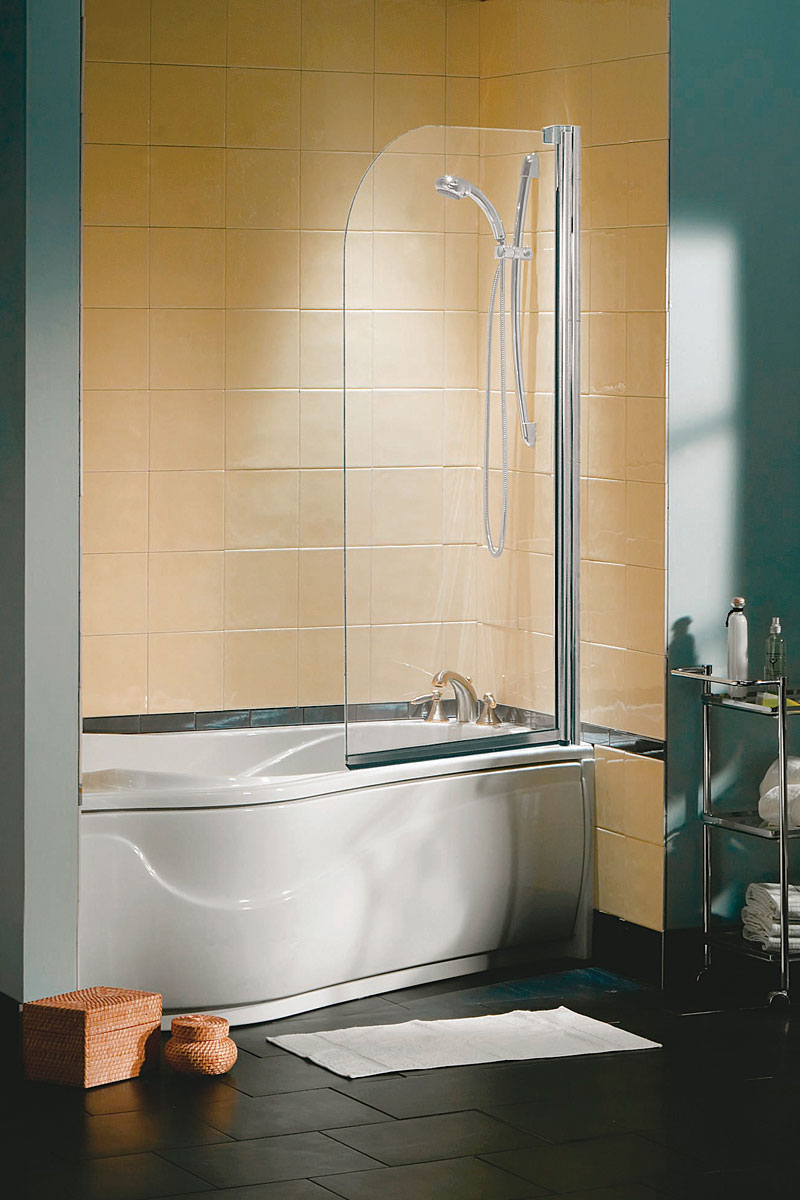
Clear vinyl seals are available to prevent water from passing through the gaps between panels, but custom-shower fabricators often claim that their tight installation tolerances eliminate the need for them.
Semiframeless Doors
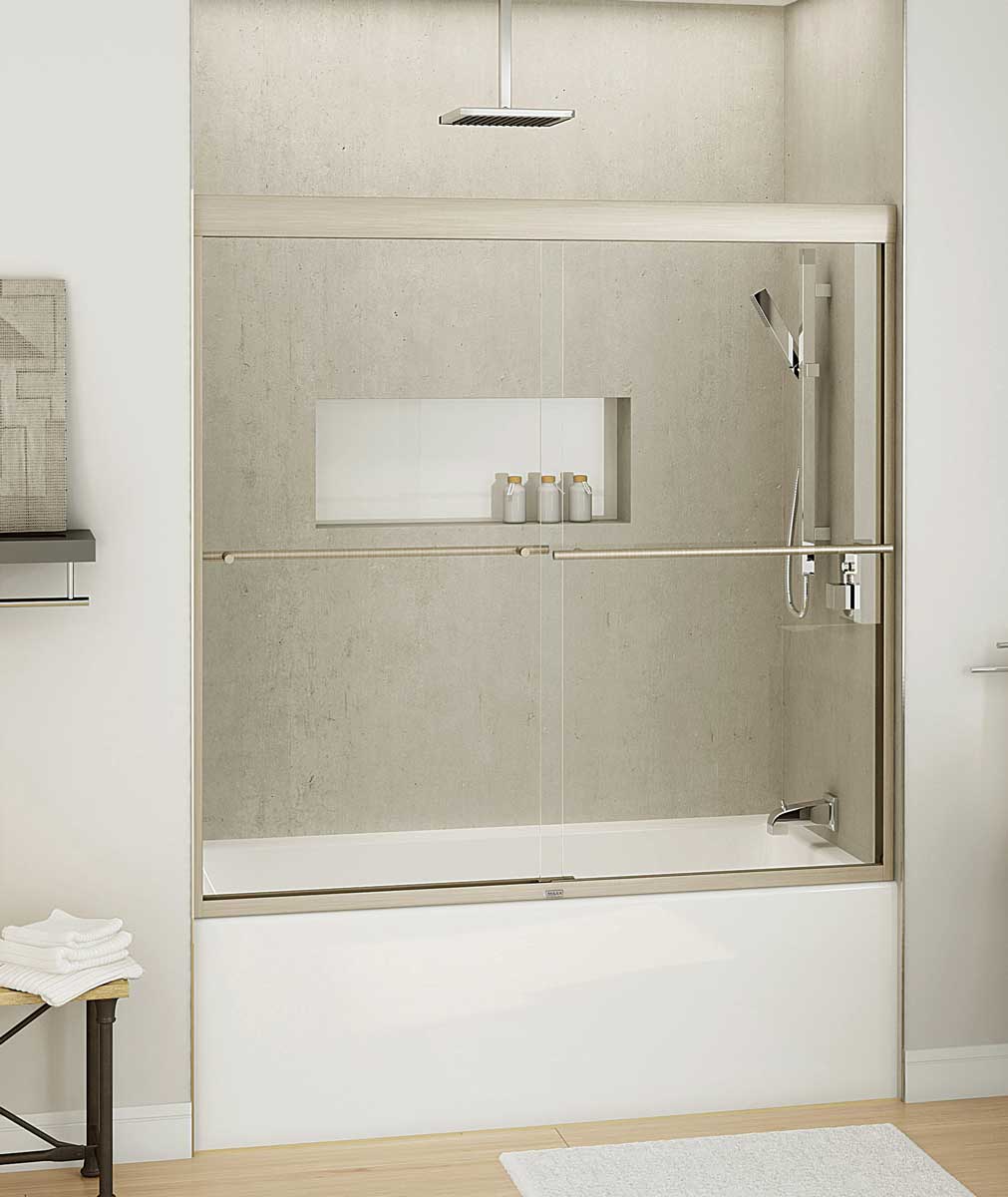
Semiframeless doors have no vertical aluminum frame. The exposed glass edges of the door(s) and the interior edge of any fixed panel provide a more open look than that of framed doors. The channels connecting the glass panels to the wall and the header provide enough support that 1⁄4-in.-thick glass is sufficiently strong. (Some brands offer a 5⁄16-in.-thick option for a more solid feel.) Because semiframeless shower doors use the same type of metal channel along the walls as framed units do, they are as adept at accommodating out-of-square openings and as effective at containing water in the shower area. Prices run from $175 to several thousand dollars.
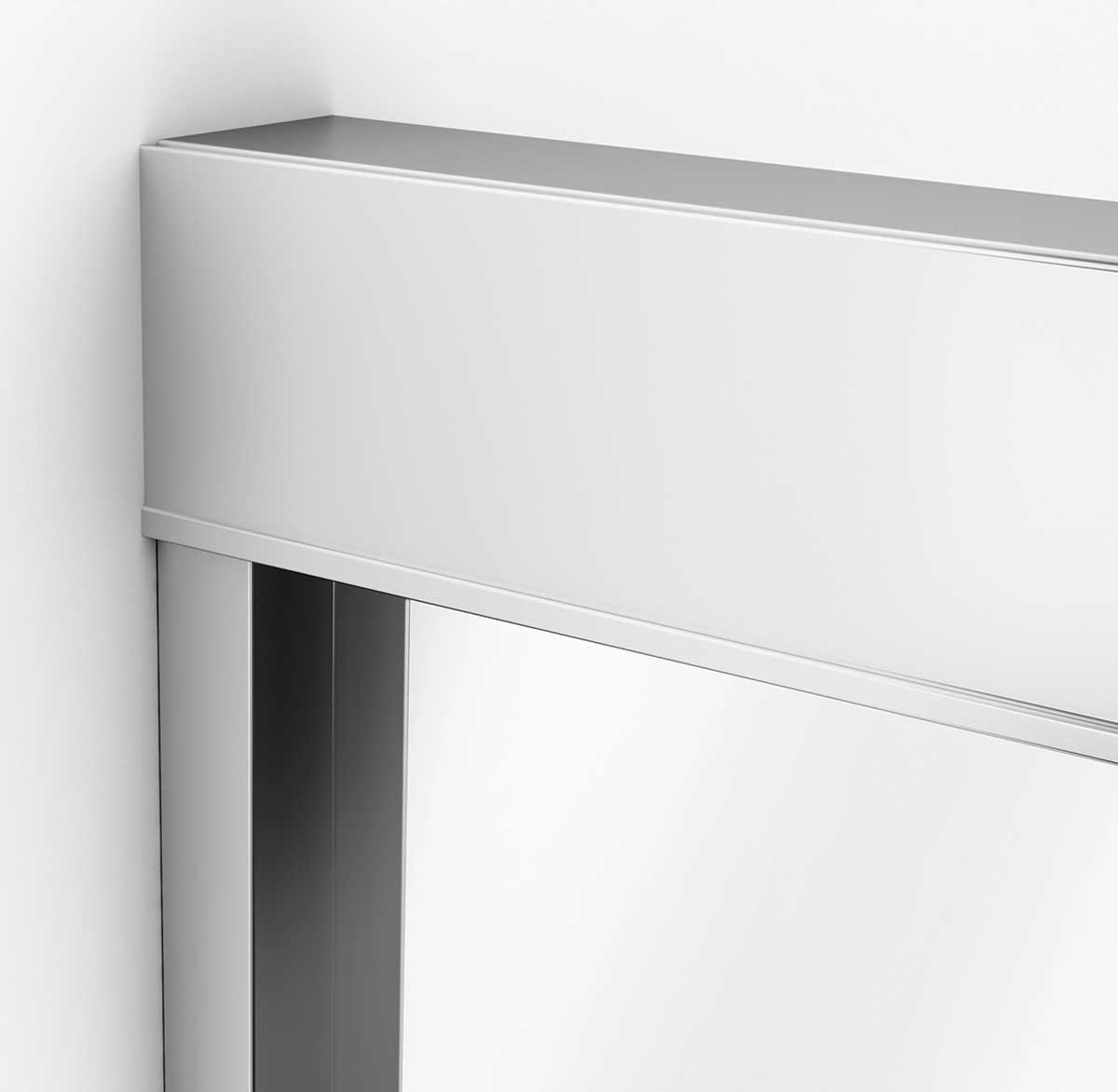
Framed doors
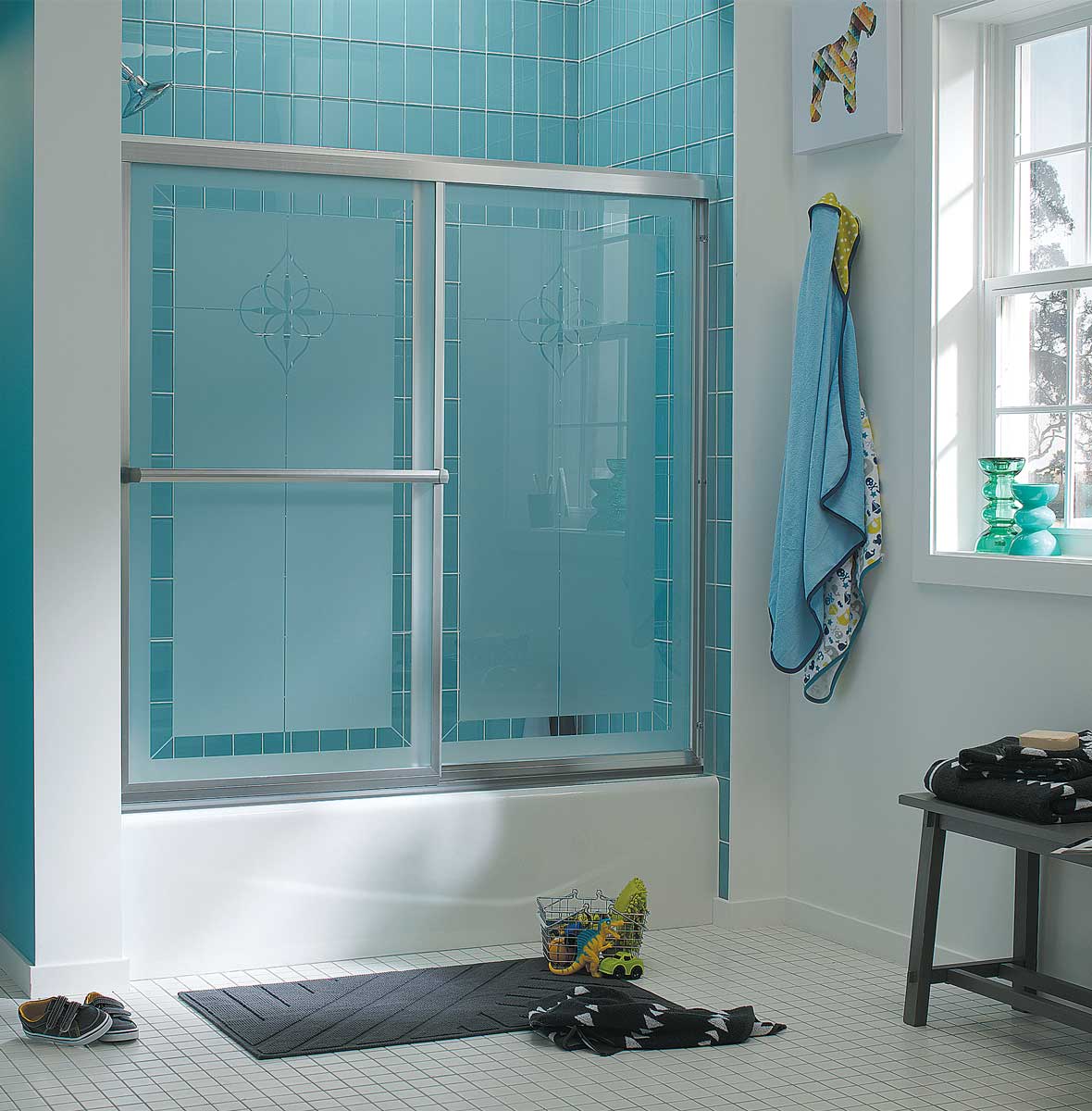
The most basic shower-door option is a fully framed unit. Each glass piece, including the door panel(s), wears an aluminum frame. Nearly everybody has seen one at some point, perhaps in an older bathroom with sliding glass doors fitted to a tub. Visually it might be considered busy, but there are several advantages to this style: With a metal channel bridging each panel junction, it’s effective at containing water in the shower, including around the edges of the door. Because the glass is fully supported, panels are typically only 3⁄16 in. thick, which keeps costs down. They’re also significantly lighter than frameless panels, a plus for DIY installations. Another advantage for DIYers is the aluminum framing along the walls, which allows for adjustability to accommodate out-of-plumb walls. The degree of adjustability varies by brand but typically ranges from 1⁄4 in. to 1 in. or more. Prices for this style of door begin at $100.
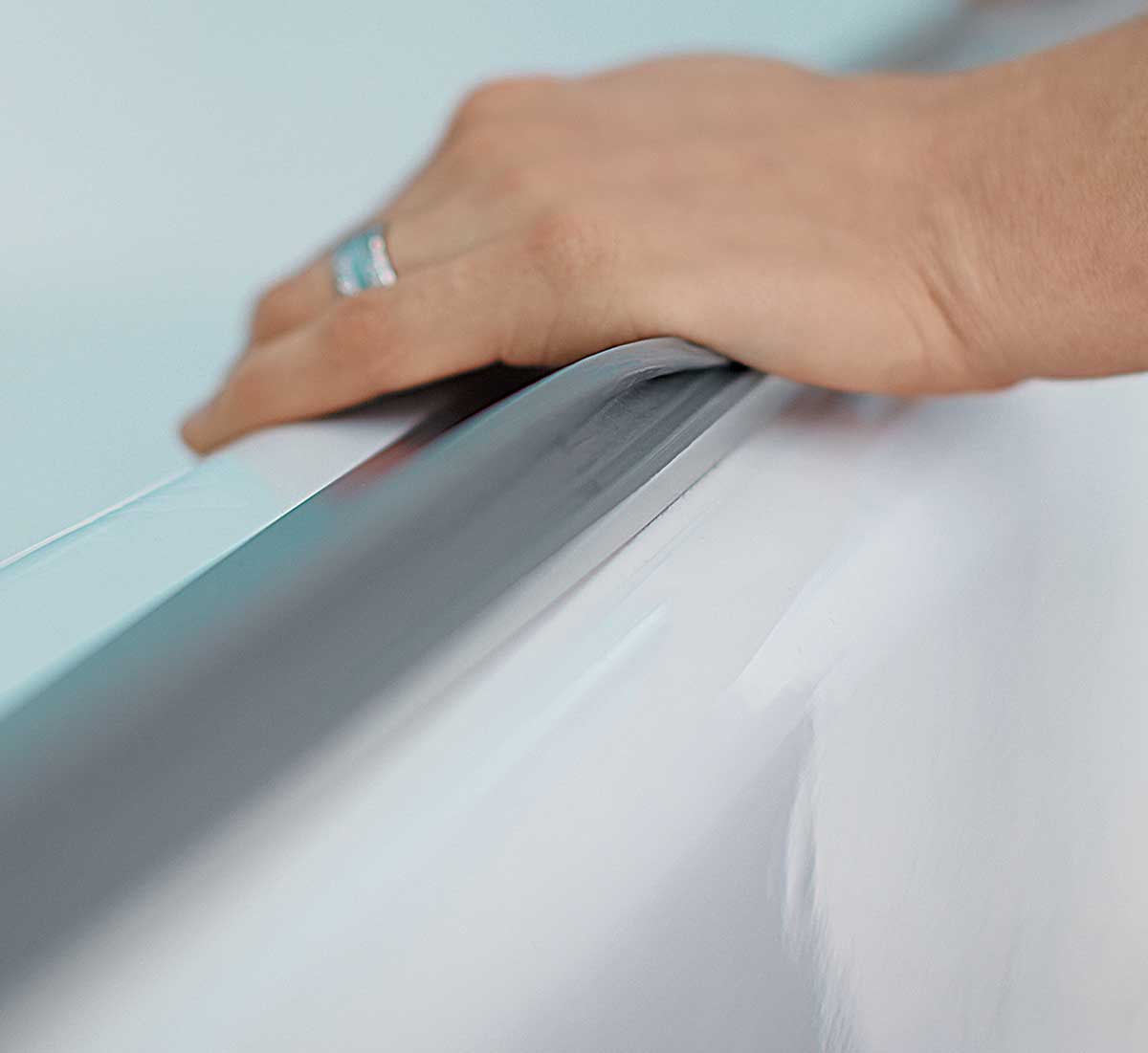
Glass to highlight or obscure
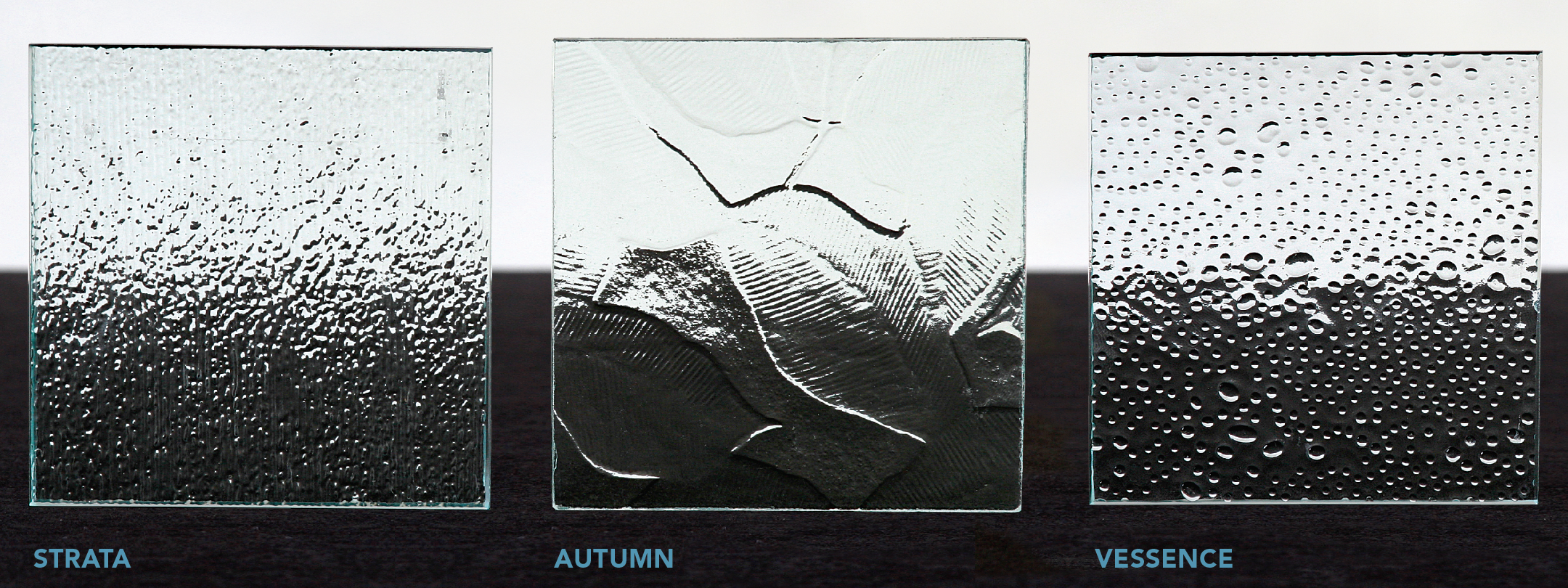
Moving from framed to semiframeless to frameless doors, the glass increasingly becomes the focal point of the shower. Shower-door glass can serve three functions: It can make the space seem larger and brighter, it can provide privacy, and it can add a design element.
Clear glass dominates the frameless-shower category. It shows off the tilework and fixtures you paid good money for, and it makes the room feel brighter and more open. Note that what most glass makers refer to as “clear” glass actually has a green tint to it. If you want the clearest, most transparent glass available, you need to specify low-iron glass, which has less of that tint.
If it’s privacy you want, a variety of obscure glasses are available. Some contain tints that darken the glass, while others have patterns that obscure the view and add a design element. Patterns—formed on only one side of the glass—help hide fingerprints that would show on clear panels.
Glass is actually a porous material and can absorb mineral deposits and soap residue. If it isn’t cleaned regularly, it can turn permanently milky over time. Some chemical cleaners can etch the glass, so it’s best if you don’t have to use them. The most effective cleaner you can buy is a squeegee for use after each shower.
Glass panels also can be ordered with treatments that cause water to bead up and roll off, which manufacturers claim reduce the need for cleaning. Some treatments, similar to the Rain X used on auto windshields, are sprayed on and can be reapplied if needed throughout the life of the shower. Others are baked onto the glass during manufacturing and can’t be renewed if they become scratched.
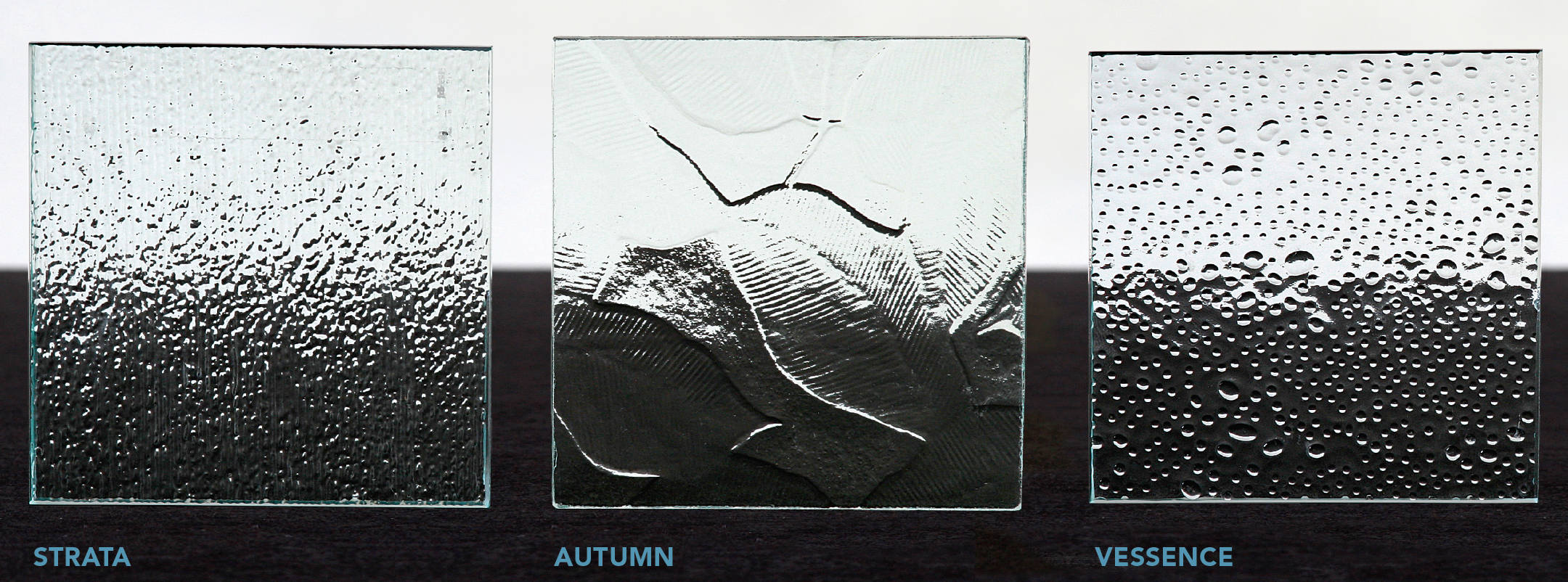
Installation in depth
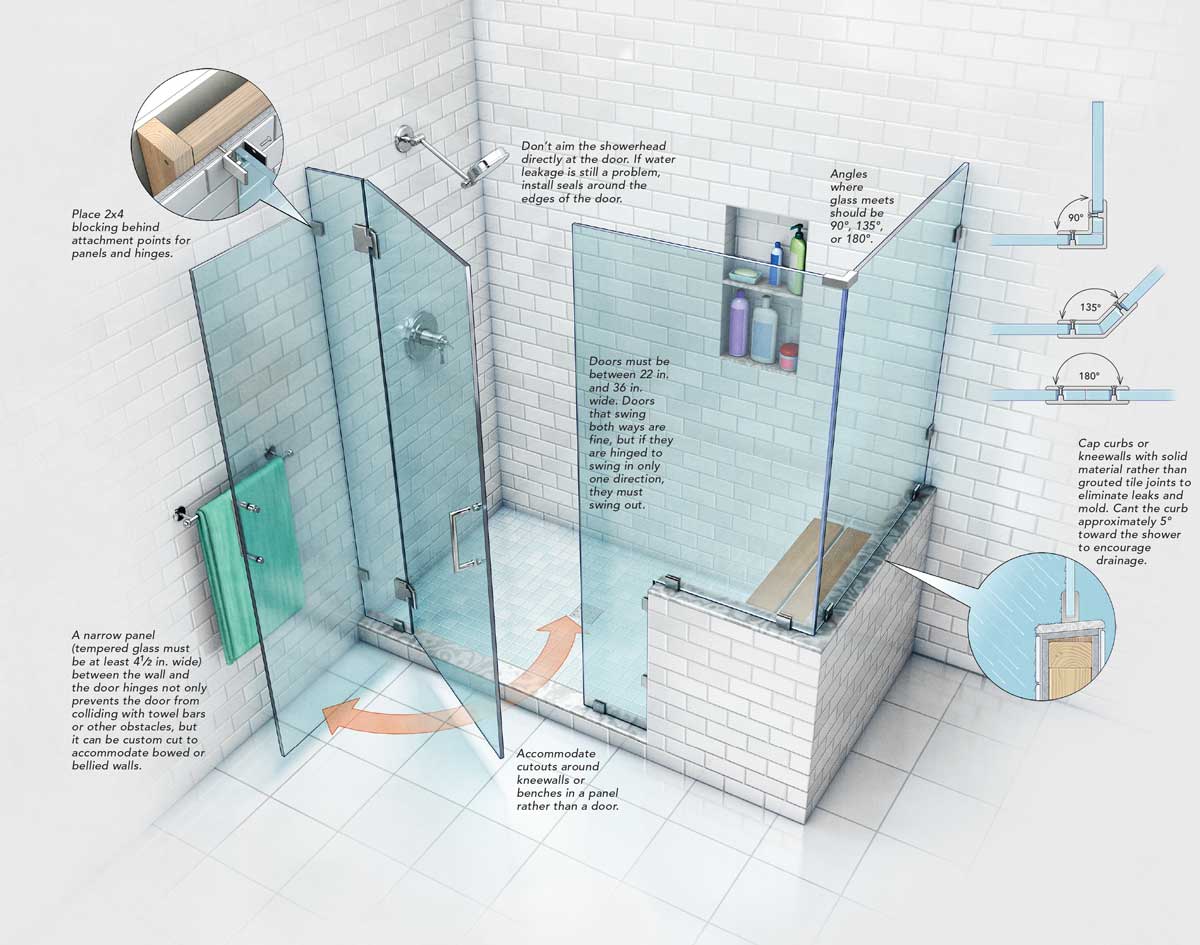
There are two components to completing your own shower: design and installation. While most retailers have staff that can help with the dos and don’ts, the drawing here offers the most important things to remember. When it comes to installation, difficulty varies by the type of shower door. By and large, out-of-the-box shower doors are a good bet for the less experienced, with alcove and corner units that have paired bases being the easiest option. Shower doors with a return panel are more difficult but still within reach of those with basic carpentry skills. Pro installations for these showers cost between $300 and $700, depending on complexity.
If you’re confident in your installation skills, there are glass manufacturers that will sell custom shower doors and enclosures to homeowners as well. Expect to pay roughly twice as much as out-of-the-box or semicustom options. The most nerve-racking part of ordering is getting accurate measurements, because the glass can’t be drilled or cut once it’s been tempered. While you’re measuring, check for plumb and level. If walls are within 1⁄4 in. to 3⁄8 in. of plumb from the bottom to the top of the opening, an out-of-the-box or semicustom shower door can accommodate the imperfection. Some models work even if the wall is farther out of plumb, but as the difference approaches an inch, the edges of doors and panels appear obviously canted. Likewise, panels can be shimmed level only a small amount before compromising watertightness. If you’re working with an existing tiled wall that’s too far out of plumb, custom doors with the glass cut exactly to the opening are the answer.
The framing stage is the time to make sure there’s blocking to anchor hardware, especially with hinged doors. If the doors will be paired with an acrylic or fiberglass shower unit, attach plywood backing strips to the rear side of the enclosure with construction adhesive to strengthen the attachment points.
Once you receive your shower door and check the panel measurements on the box, open the box carefully. Eric Zepke, a product rep for Maax and a glass-door installer, sees a lot of cases where someone has sliced the box open with a utility knife and left a long scratch in the header or one of the jambs.
Drilling tile can be a time-consuming part of the project. It’s not unusual to hear tales of tile installers going through several cheap dry-drilling bits while taking 40 minutes to drill a hole. For drilling holes in tile, Cape Cod–based tile installer Tom Meehan recommends quality wet-cutting diamond drill bits such as those by Rodia. Although they’re expensive ($95 or more), they’ll last for 300 holes and finish each hole in a minute or less. Installed glass tiles shouldn’t be drilled because they’ll break. If there are glass accent tiles, adjust screw locations to work around them.
Sealing shower doors with silicone caulk according to the manufacturer’s instructions is critical. Seal the outside of channels, paying particular attention to the bottom corners. Caulking the outside serves two functions: It allows any water that gets behind the interior edges to drain back into the shower or the tub, and it prevents the silicone from turning black with mold.
Door hardware
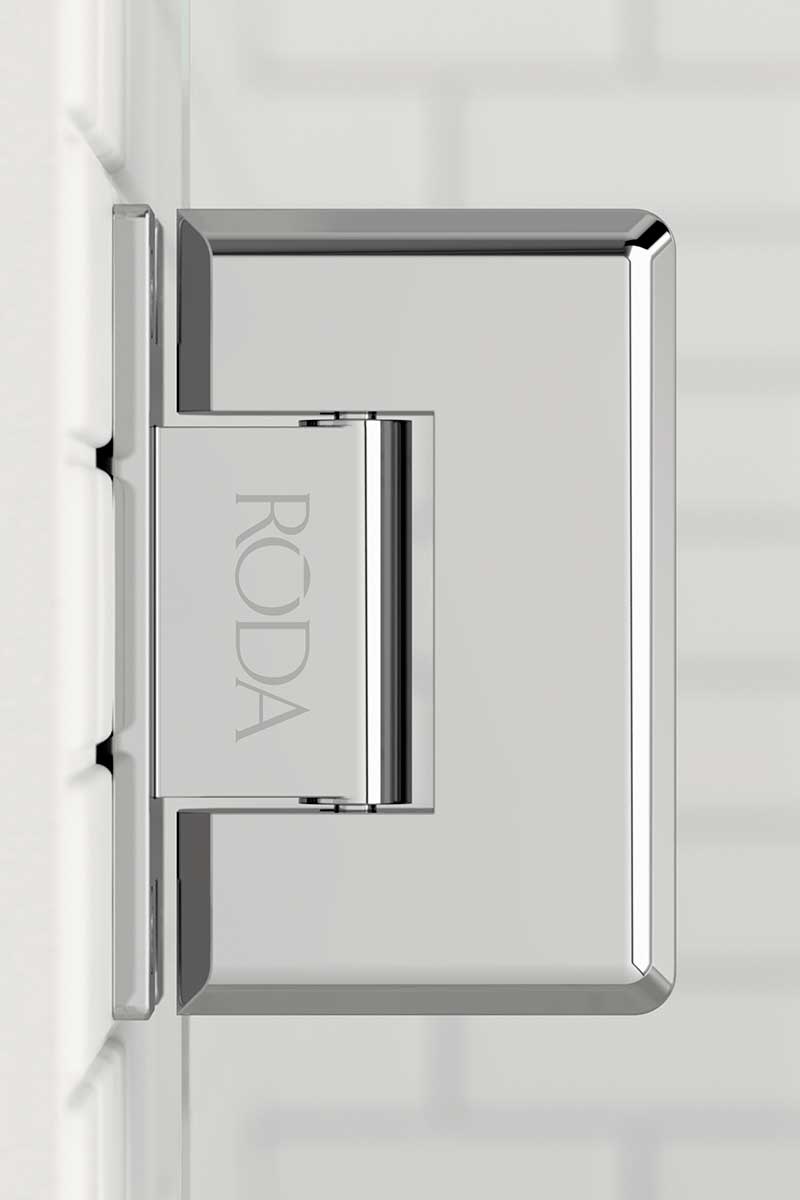
The hardware for shower doors falls into three categories: hinges, handles, and headers. Hinges and handles typically are chosen to match the finish and style of the shower controls, the showerhead, and the vanity fixtures. High-end custom showers typically use stainless steel or plated brass for the hinges and connection plates. Lower-cost shower doors are more likely to have aluminum hardware that’s plated to look like bronze, nickel, or silver. The plating on lower-cost hardware is more likely to flake off, say from the rubbing action of towels hung on handles, leaving an unsightly two-tone finish. Remember the adage, “You get what you pay for.”
Hinges come in glass-to-wall and glass-to-glass mounting styles, and both require cutouts in the glass. Similar to the hardware found on a traditional door, glass-to-wall hinges are mounted at intervals along the edge of the shower door. Pivot hinges mount on the top and bottom of the glass. The bottom hinge rests on the curb and carries the weight of the door, while the top hinge mounts either to the wall or to a header.
A header can be chosen as a design element, but it’s really more of a necessity. If you like the idea of a sliding door, you’ll have to accept a header as a visual element. Sliding doors require a header either for a concealed track roller or as the guide bar on the popular barn-door-style rollers. The appeal of frameless doors with pivot hinges is their clean, nearly glass-only look, but long runs of glass or return-panel configurations might require reinforcement. A header is one solution, but sometimes return panels can be supported with an angled brace instead.
Sources
Doors
The Original Frameless Shower Doors, framelessshowerdoors.com
Cardinal Shower Enclosures, hmiglass.com
Alumax Bath Enclosures by Sapa, alumaxshowerdoor.com
Century Bathworks, centurybathworks.com
Tile drill bits
Rodia, rodiatools.com
Vacuum cup handles
Wood’s Powr-Grip, wpg.com
Sean Groom is a contributing editor.
From Fine Homebuilding #255





